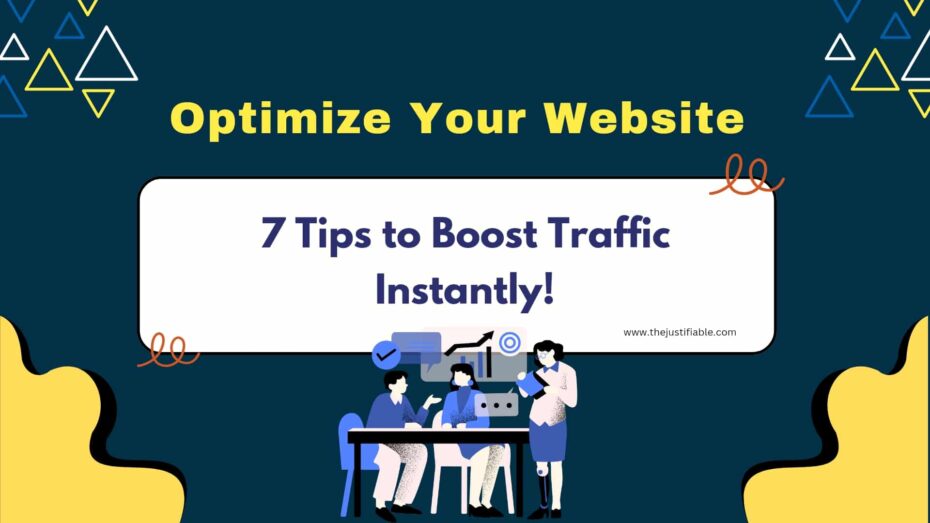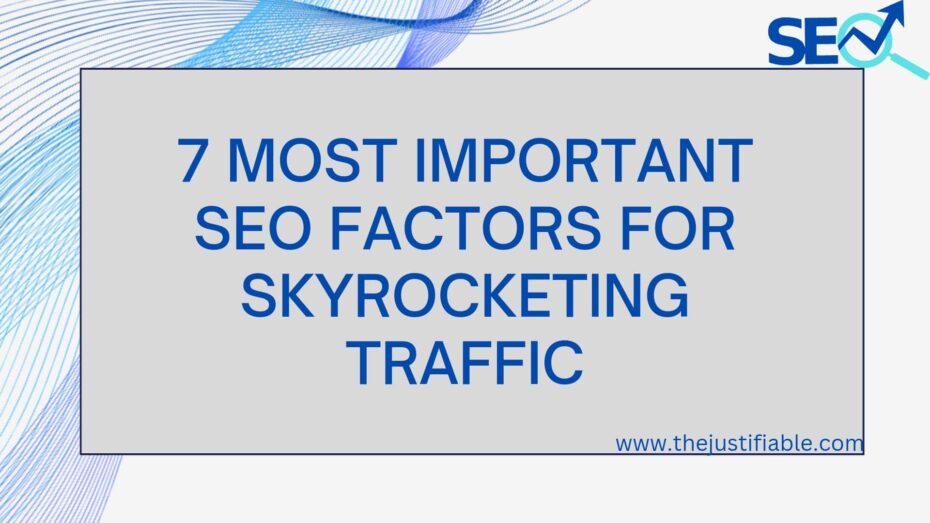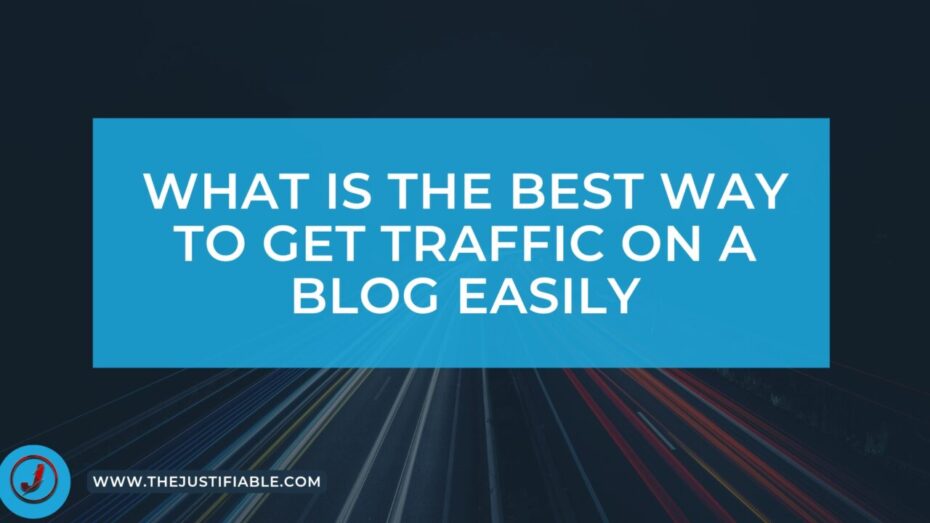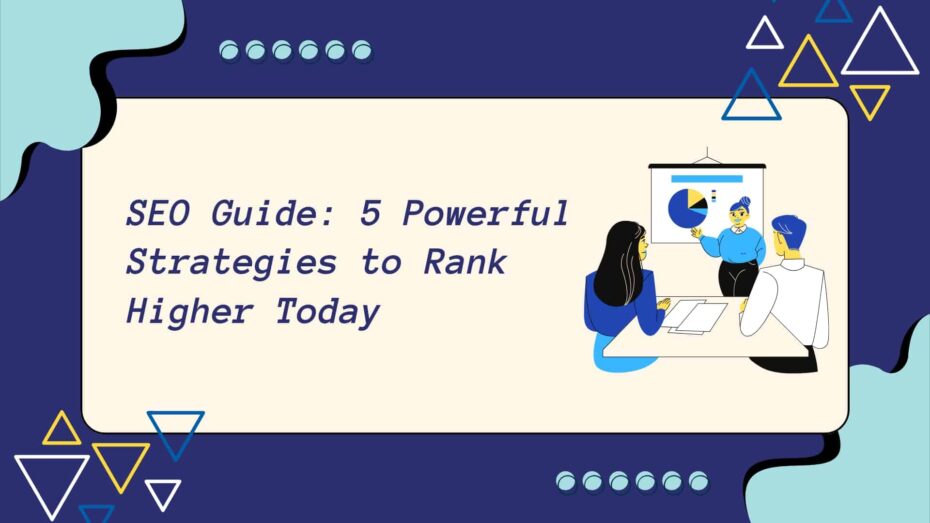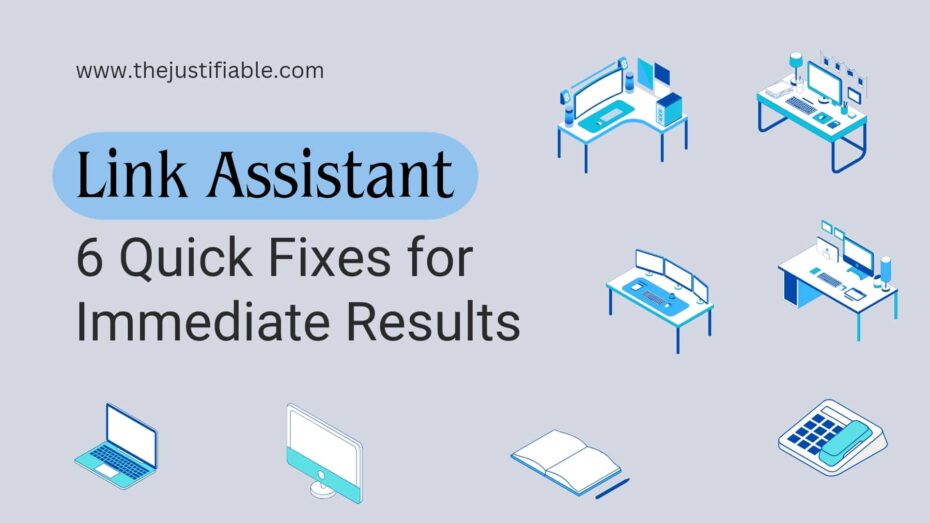Disclosure: This post contains affiliate links, which means that if you click on them and make a purchase, I will receive a commission. Read our Disclaimer for More.
Optimizing your website is the cornerstone of enhancing your online presence and significantly increasing traffic. From my perspective, the key to unlocking this potential lies in understanding and implementing a variety of strategies that cater to both search engines and your target audience. It’s not just about making your site look good; it’s about creating a platform that is easily discoverable, highly engaging, and delivers value to its visitors.
I believe that by focusing on the user experience, content relevance, and technical SEO, you can create a website that not only ranks well in search results but also captivates and retains visitors. This involves a delicate balance of art and science – using data-driven insights to inform creative decisions and crafting content that resonates with your audience.
Let us delve into the seven tips to boost traffic.
1. Elevate Your SEO Game: A 2024 Guide to Optimize Your Website
How can you ensure that your website stands out in the ever-competitive digital landscape of 2024? What strategies can you employ to not just attract, but also retain a significant amount of traffic? Optimizing your website, in my opinion, is more crucial now than ever before. With the right approach, the task of making your site more visible and engaging becomes less daunting.
From my perspective, the first step in elevating your SEO game is to stay abreast of the latest algorithm updates and SEO trends. This requires a commitment to continuous learning and adaptation. It’s not just about applying the most recent tactics; it’s about foreseeing changes and preparing your website to meet these evolving standards.
Speaking personally, I suggest focusing on enhancing the technical aspects of your site, such as its loading speed, mobile responsiveness, and structured data. These factors not only contribute to a better user experience but are also favored by search engines. Incorporating these elements into your SEO strategy can significantly improve your website’s ranking and visibility.
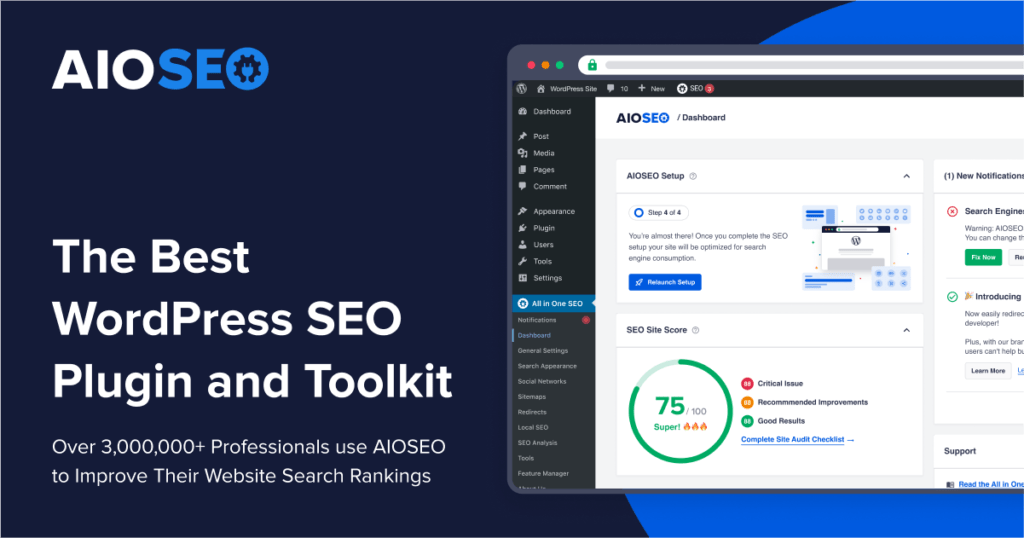

Unleash Powerful Keywords: The Heart of Your SEO Strategy
Why are keywords considered the backbone of an effective SEO strategy? How can you identify and leverage the right keywords to drive more traffic to your site? From my point of view, understanding the intent behind the searches your target audience makes is fundamental to optimizing your website successfully.
I believe that conducting comprehensive keyword research is essential. This involves not just identifying the terms your audience is searching for, but also understanding the context and intent behind these searches. By integrating these keywords naturally into your content, you can ensure that your website not only attracts but also satisfies the needs of your visitors.
In my estimation, the use of long-tail keywords is particularly effective. These are more specific phrases that visitors are likely to use when they’re closer to a point-of-purchase or when they’re using voice search. I suggest focusing on these types of keywords because they tend to have a higher conversion rate and less competition, making them a valuable asset in your SEO arsenal.
Backlinks: The Secret Ingredient for SEO Success
What makes backlinks so vital for SEO success? Can the quality of your backlinks truly make or break your website’s ranking? From my experience, the answer is a resounding yes. Backlinks serve as endorsements from one site to another, signaling to search engines that your content is valuable and trustworthy.
I think it’s important to focus on the quality of backlinks rather than just the quantity. A few high-quality backlinks from reputable sites in your industry can be much more beneficial than a large number of low-quality links. This is because search engines like Google place a significant emphasis on the relevance and authority of the linking sites.
From my perspective, building relationships with other website owners and content creators in your niche is a key strategy for earning quality backlinks. Guest posting, producing shareable content, and engaging in online communities can all contribute to a robust backlink profile. I suggest approaching backlink building as an ongoing effort, one that requires consistency and genuine engagement with your industry’s community.
2. Maximize User Experience: 3 Strategies to Keep Visitors Hooked
User experience (UX) is paramount in retaining visitors and encouraging them to engage more deeply with your content. In my view, a website that prioritizes UX not only sees higher engagement rates but also enjoys better conversion rates. This is because a positive user experience directly influences the perception of your brand and the value your website provides.
From my perspective, there are several key areas to focus on when looking to enhance UX. These include website speed, mobile responsiveness, and intuitive navigation. By optimizing these areas, you can significantly improve how visitors interact with your site, making it more likely they’ll stay longer and explore more of what you have to offer.
I strongly believe that by implementing the strategies discussed below, you can create a more engaging and user-friendly website. This not only helps in retaining current visitors but also in attracting new ones. Let’s delve into some of these strategies and explore how they can be applied to optimize your website.
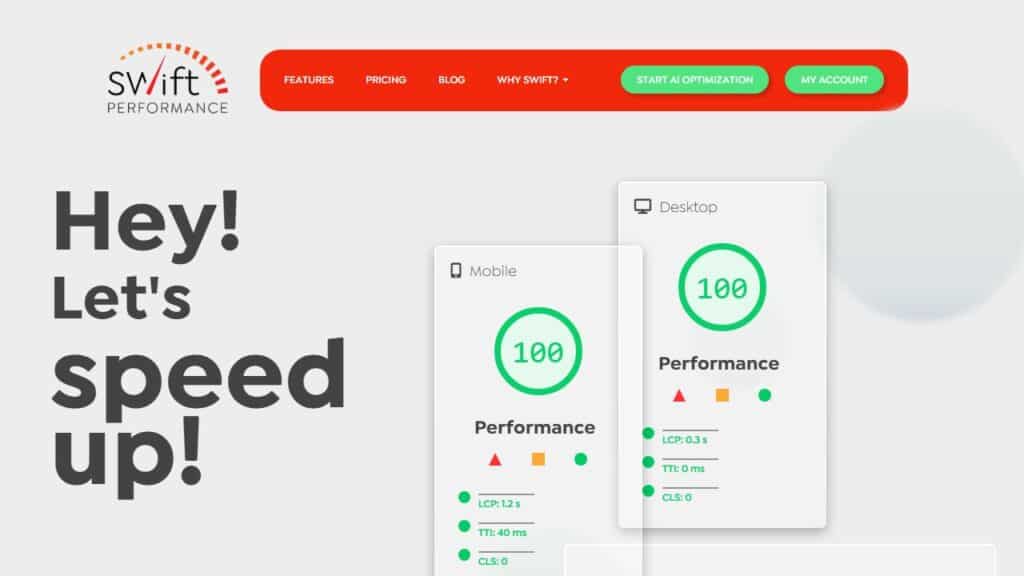

Speed Optimization: Make Your Site Lightning Fast
Did you know that a 1-second delay in page response can result in a 7% reduction in conversions? In my experience, website speed is a critical component of user experience that can’t be overlooked. A fast-loading site not only improves user satisfaction but also positively impacts your SEO rankings.
I suggest conducting regular speed audits using tools like Google PageSpeed Insights to identify and fix potential bottlenecks. This might include optimizing images, leveraging browser caching, and minimizing the use of blocking JavaScript and CSS in above-the-fold content.
From my point of view, investing in high-quality hosting and considering a content delivery network (CDN) can also make a significant difference in your site’s loading speed. These steps ensure that your website remains as fast as possible, providing a smooth experience for all visitors, which is essential for keeping them engaged and interested in your content.
Mobile-Friendly Design: Capture the Growing Mobile Audience
With over half of all web traffic coming from mobile devices, having a mobile-friendly website is no longer optional; it’s imperative. In my honest opinion, a mobile-responsive design not only caters to the majority of your audience but also contributes to your site’s SEO performance.
I would say that the key to a successful mobile-friendly design lies in simplicity and intuitiveness. This means prioritizing navigation ease, making sure buttons are easily clickable, and ensuring that text is readable without needing to zoom in. Responsive design ensures that your site looks and performs well on all devices, which is crucial for engaging the mobile audience.
In my experience, using mobile-first design principles can significantly enhance the mobile user experience. This approach involves designing for the smallest screen first and then scaling up, which ensures that mobile users receive a seamless experience. I believe that by focusing on the mobile experience, you can effectively capture and retain a growing audience that prefers to access the web on the go.
3. Leverage the Power of Social Media: Boost Your Visibility
“Social media is not just an activity; it is an investment of valuable time and resources.” This quote underscores the transformative power of social media in today’s digital landscape. From my point of view, leveraging social media is not just about posting regularly but about crafting a strategy that enhances your brand’s visibility and engages your audience on a deeper level.
I believe that the key to harnessing the power of social media lies in understanding your audience and delivering content that resonates with them. This involves not only promoting your products or services but also sharing content that adds value to their lives. Whether it’s educational posts, entertaining videos, or inspiring stories, the content should be tailored to the interests and needs of your followers.
In my experience, consistency is crucial when it comes to social media. Posting regularly keeps your audience engaged and helps maintain your brand’s presence in their minds. However, it’s important to strike a balance between being present and overwhelming your followers. I suggest creating a content calendar to plan your posts and ensure a good mix of content types and themes.
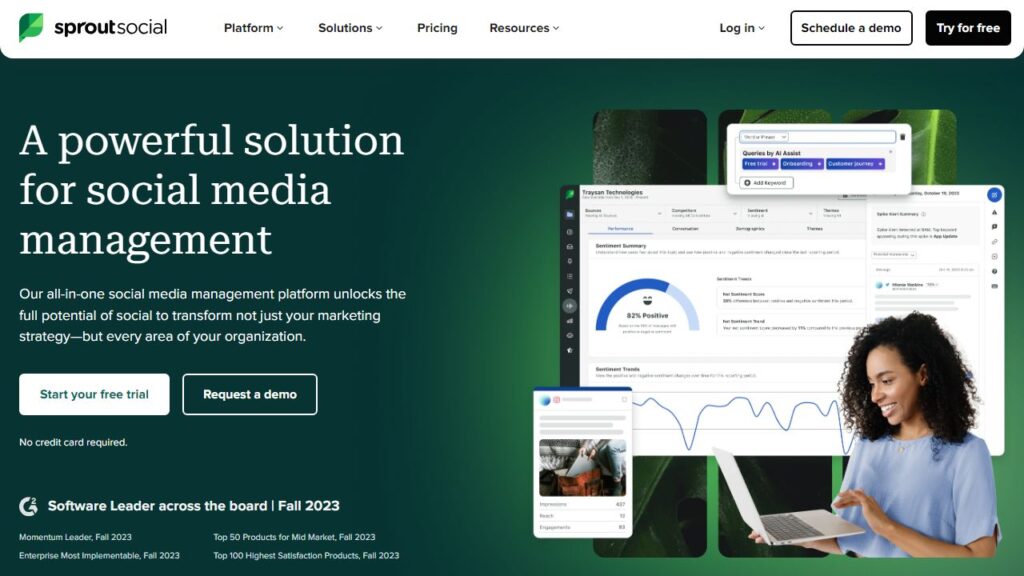

Create Share-Worthy Content: Strategies for Viral Posts
“Content is fire; social media is gasoline.” I couldn’t agree more with this analogy. In my opinion, creating share-worthy content is the cornerstone of any successful social media strategy. It’s not just about getting your message out there but about crafting messages that spread like wildfire.
I strongly believe that the key to creating viral content lies in evoking emotions. Whether it’s joy, surprise, or even anger, content that touches people’s hearts or stirs up emotions is more likely to be shared. This doesn’t mean every post needs to aim for virality but focusing on quality and emotional engagement can significantly increase the chances of your content being shared.
According to my estimation, incorporating visuals, such as images and videos, can also enhance the shareability of your content. Visuals are processed 60,000 times faster than text by the human brain, making them a powerful tool for catching attention and conveying your message quickly. I suggest investing in high-quality visuals and experimenting with different formats to see what resonates most with your audience.
Engage With Your Followers: Building a Loyal Community
“Engagement is the currency of social media.” This statement highlights the importance of interacting with your followers to build a loyal community. From my perspective, engagement goes beyond just responding to comments and messages; it’s about creating a dialogue and fostering a sense of belonging among your audience.
I believe that asking questions, conducting polls, and creating interactive content are effective ways to encourage participation and make your followers feel valued. It shows that you’re interested in their opinions and open to feedback, which can strengthen their loyalty to your brand.
In my experience, recognizing and rewarding your most engaged followers can also promote a positive community spirit. Whether it’s through shoutouts, exclusive offers, or featuring their content, acknowledging their support helps foster a deeper connection and encourages others to engage more actively. I would say that building a community on social media is an ongoing effort that requires patience, authenticity, and a genuine desire to connect with your audience.
4. Utilize Data Analytics: Understand and Grow Your Traffic
While it’s true that intuition plays a role in digital marketing, the real game-changer comes from data-driven decision-making. In my opinion, leveraging data analytics is crucial for anyone looking to optimize their website and increase traffic. The insights gained from analytics allow you to understand your audience better, evaluate your website’s performance, and make informed adjustments to your strategy.
I believe that the journey to effectively using data analytics begins with setting clear goals and KPIs. Whether it’s reducing bounce rates, increasing page views, or boosting conversions, having specific targets in mind helps focus your analysis and measure success. From my perspective, this is where the true power of data analytics shines, providing a roadmap for continuous improvement and growth.
In my experience, one of the most significant benefits of data analytics is its ability to highlight areas of your website that may not be performing as expected. By diving into the data, you can identify patterns, trends, and anomalies that might not be apparent at first glance. This level of insight is invaluable for making precise tweaks to your content, layout, or marketing strategies, ultimately leading to a more successful website.
Google Analytics: Uncover Insights to Drive Traffic
“Half the money I spend on advertising is wasted; the trouble is I don’t know which half.” This famous quote by John Wanamaker highlights the dilemma many website owners face. However, in my opinion, tools like Google Analytics have revolutionized our ability to understand and optimize our digital efforts. By utilizing Google Analytics, you can gain a comprehensive view of your website’s traffic, user behavior, and content performance.
I strongly believe that one of the first steps to maximizing the benefits of Google Analytics is to familiarize yourself with its vast array of features and reports. From tracking real-time user activity to analyzing the effectiveness of your marketing campaigns, Google Analytics offers a wealth of data that can inform your strategy. In my view, paying close attention to metrics such as bounce rate, traffic sources, and session duration can provide actionable insights to enhance your website’s user experience and SEO.
In my honest opinion, effectively using Google Analytics also involves setting up goals and conversion tracking. This allows you to measure how well your site fulfills your target objectives, such as completing a purchase, signing up for a newsletter, or engaging with your content. I suggest regularly reviewing these metrics and using them to guide your optimization efforts. This ongoing process helps ensure that your website remains aligned with your business goals and continues to attract and retain visitors.
A/B Testing: Fine-Tune Your Website for Maximum Impact
Acknowledging that not every change leads to success is crucial in the digital marketing world. That’s why, in my view, A/B testing is an invaluable tool for website optimization. By comparing two versions of a webpage, you can empirically determine which elements contribute to better performance in terms of user engagement, conversion rates, or any other metric that’s important to your goals.
I believe that the beauty of A/B testing lies in its simplicity and effectiveness. Whether you’re experimenting with different call-to-action buttons, headlines, or images, A/B testing allows you to make data-backed decisions that can significantly impact your website’s success. From my perspective, starting with hypotheses based on insights from your analytics can help you prioritize which elements to test.
In my experience, the key to successful A/B testing is not just in the execution but also in the analysis of the results. It’s essential to ensure that your tests are statistically significant and that you’re drawing the correct conclusions from the data. I suggest implementing one change at a time and allowing sufficient time for each test to run. This methodical approach can lead to incremental improvements that, over time, can have a profound effect on your website’s performance and user satisfaction.
5. Content Is King: Craft Compelling Blogs and Articles
Much like the foundation of a house gives it structure and stability, high-quality content serves as the bedrock of a successful website. In my opinion, crafting compelling blogs and articles is not just about filling pages with words; it’s about creating value for your audience, establishing authority in your niche, and enhancing your SEO efforts. This is where the adage “Content is King” truly comes to life, highlighting the importance of quality content in the digital realm.
I believe that the key to creating engaging content lies in understanding the needs and interests of your audience. By doing so, you can produce articles and blogs that resonate with your readers, encouraging them to spend more time on your site and interact with your brand. From my perspective, this not only boosts your SEO rankings but also fosters a loyal following.
In my experience, consistency is also key when it comes to content creation. Regularly updating your website with fresh, relevant articles keeps your audience engaged and gives them a reason to return. This consistent effort can significantly impact your website’s visibility and authority over time, making it a go-to resource in your field.
Keyword-Rich Content: Attract More Visitors
“Content without keywords is like a boat without a compass.” This statement rings true for anyone looking to optimize their website and attract more visitors. In my view, integrating relevant keywords into your content is a crucial strategy for improving your site’s SEO and making it more visible to your target audience. However, it’s important to strike a balance between keyword optimization and natural, engaging writing.
I strongly believe that keyword research should be the first step in any content creation process. Understanding which terms your target audience is searching for allows you to tailor your content to meet their needs. From my perspective, using these keywords naturally throughout your articles not only helps search engines understand your content but also ensures it remains readable and engaging for your audience.
In my honest opinion, the goal of keyword-rich content should not be to manipulate search rankings but to genuinely provide value to your readers. By focusing on creating informative and interesting content that naturally incorporates your chosen keywords, you can attract more visitors to your site and keep them engaged longer.
Multimedia Integration: Enhance Engagement with Videos and Images
In today’s fast-paced digital landscape, incorporating multimedia into your content strategy is more important than ever. I would say that text alone can no longer captivate the average internet user’s attention as effectively as it once did. Integrating videos, images, infographics, and other forms of multimedia can significantly enhance user engagement and make your content more appealing.
I believe that multimedia elements can serve multiple purposes. They not only break up long blocks of text, making your content more digestible, but they also provide opportunities to illustrate concepts, showcase products, or tell stories in more dynamic ways. From my perspective, this variety not only enriches the user experience but also supports different learning styles, ensuring that your message reaches a wider audience.
Most importantly, in my experience, multimedia content tends to have a higher shareability factor on social media platforms, which can further amplify your reach and visibility. I suggest leveraging high-quality visuals and videos that complement your written content. This approach not only makes your articles more engaging but also boosts their potential to be shared across social networks, driving more traffic to your website.
6. Email Marketing: A Powerful Tool to Retain Visitors
It might come as a surprise to some, but email marketing remains one of the most effective strategies for retaining visitors and converting them into loyal customers. Despite the rise of social media and other forms of digital communication, email marketing holds a unique place in a comprehensive digital marketing strategy. From my point of view, its direct approach and personal touch can create meaningful connections with your audience that other platforms struggle to replicate.
I believe that the secret to successful email marketing lies in its ability to deliver targeted content directly to individuals who have already expressed an interest in your brand. This personalized approach ensures that your messages are relevant and valuable to each recipient. From my perspective, this relevance is what makes email marketing so effective at encouraging repeat visits to your website.
In my experience, a well-crafted email marketing campaign can serve multiple purposes, from nurturing leads to promoting special offers, and providing valuable content. By maintaining regular contact with your subscribers, you keep your brand at the forefront of their minds, making them more likely to return to your website when they’re ready to make a purchase or engage with your content further.
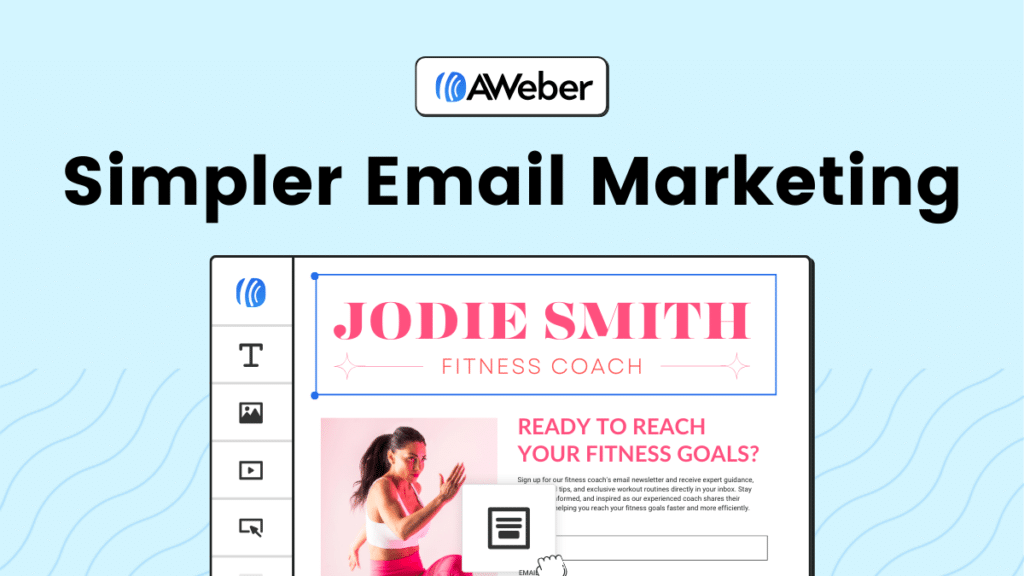

Personalized Email Campaigns: Increase Return Visits
One of the most compelling aspects of email marketing is its ability to be personalized for each recipient. It’s fascinating to note that emails with personalized subject lines are 26% more likely to be opened than those without. In my honest opinion, this level of personalization goes a long way in building a relationship with your audience, making them feel valued and understood.
I strongly believe that the key to creating effective personalized email campaigns lies in segmenting your email list based on user behavior, interests, and previous interactions with your site. This segmentation allows you to tailor your messages to match the specific needs and preferences of different groups within your audience. From my perspective, such targeted communication significantly increases the likelihood of recipients revisiting your website.
In my estimation, personalization should extend beyond just using the recipient’s name. I suggest incorporating content recommendations based on past purchases or interactions, personalized offers, and updates that are relevant to each subscriber. This strategy not only boosts the effectiveness of your email campaigns but also enhances the overall user experience by making each communication feel specially crafted for the individual.
Newsletter Sign-Ups: Keep Your Audience Informed and Engaged
Newsletters are a fantastic tool for keeping your audience informed about the latest developments within your brand, including new content, products, services, and upcoming events. What’s surprising is not just the effectiveness of newsletters in driving traffic back to your website but their role in establishing your brand as a thought leader in your industry. In my view, a well-designed newsletter can create a sense of community among your subscribers, fostering loyalty and encouraging engagement.
I believe that the key to a successful newsletter is providing genuine value to your subscribers. This means curating content that is not only promotional but also educational, entertaining, and inspiring. From my perspective, newsletters should be seen as an extension of your brand’s story, offering insights and value that cannot be found elsewhere.
In my experience, encouraging newsletter sign-ups through your website and social media channels is crucial. Offering incentives, such as exclusive content or discounts, can significantly increase subscription rates. I would say that by maintaining a regular newsletter schedule and continuously optimizing based on subscriber feedback, you can keep your audience engaged and interested in what your brand has to offer, ultimately driving more traffic and loyalty to your website.
7. Paid Advertising: Accelerate Your Traffic Growth
While organic strategies form the backbone of any robust digital marketing plan, integrating paid advertising can significantly accelerate your website’s traffic growth. From my point of view, the immediacy and scalability of paid ads offer a unique advantage, allowing you to quickly increase visibility and drive targeted traffic to your site. It’s fascinating how paid advertising can complement organic efforts, providing a boost in visibility that might take much longer to achieve through SEO and content marketing alone.
I believe that the key to successful paid advertising lies in its precision targeting capabilities. By carefully selecting your audience based on demographics, interests, and behavior, you can ensure that your ads are seen by those most likely to be interested in your offerings. From my experience, this targeted approach not only improves the efficiency of your advertising spend but also increases the relevance of your ads to potential visitors, enhancing the overall effectiveness of your campaigns.
In my honest opinion, while paid advertising requires an upfront investment, the potential ROI makes it a worthwhile strategy for many businesses. By setting clear objectives, monitoring your campaigns closely, and continuously optimizing based on performance data, you can maximize the impact of your paid advertising efforts. Most importantly, integrating paid ads into your broader digital marketing strategy can provide a comprehensive approach to driving traffic and achieving your website’s growth objectives.
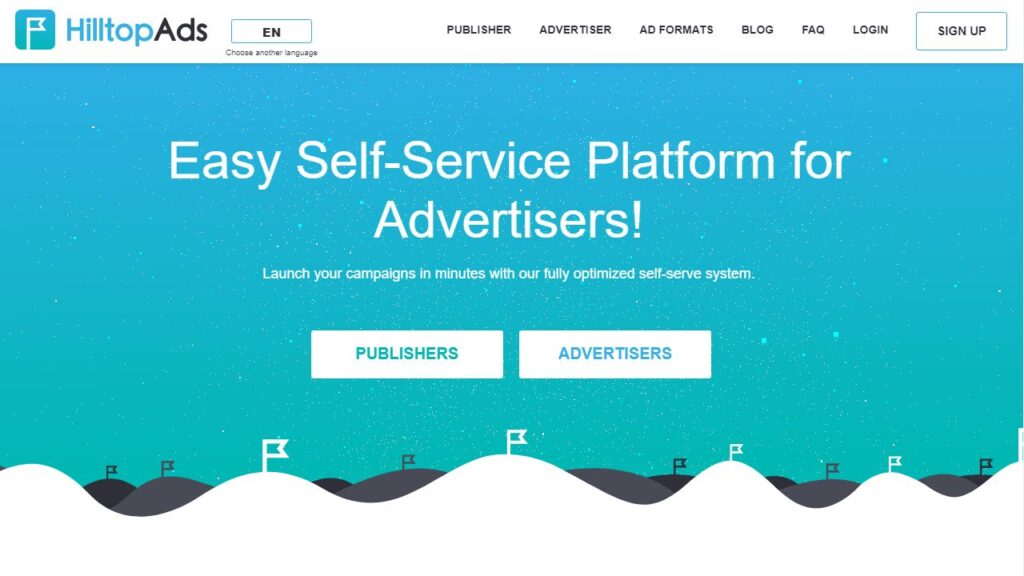

Google Ads: Target Potential Visitors Precisely
Google Ads stands out as a powerful tool for driving targeted traffic to your website. It’s surprising to many how effectively Google Ads can connect you with potential visitors at the very moment they’re searching for the products or services you offer. In my view, the platform’s extensive reach and sophisticated targeting options make it an indispensable part of any paid advertising strategy.
I strongly believe that the success of a Google Ads campaign hinges on thorough keyword research and understanding the intent behind searches. This involves not just identifying the terms your target audience is using but also crafting ad copy that directly addresses their needs and motivations. From my perspective, this tailored approach can significantly improve click-through rates and conversion rates, making your ads more cost-effective.
In my experience, leveraging Google Ads’ various ad formats and extensions can also enhance the visibility and appeal of your ads. Whether it’s through shopping ads, display ads, or sitelink extensions, these features provide additional information and entry points to your website. I would say that by continuously testing and refining your campaigns, you can uncover valuable insights that inform your overall marketing strategy, helping you to more precisely target potential visitors and grow your traffic more effectively.
Social Media Ads: Tap Into Highly Engaged Audiences
Social media platforms offer a treasure trove of highly engaged audiences, making social media ads an essential tool for expanding your website’s reach. What’s intriguing is the level of granularity with which you can target your ads on platforms like Facebook, Instagram, and LinkedIn. This precision allows you to tailor your messaging and visuals to resonate deeply with your intended audience, fostering higher engagement rates and driving more targeted traffic to your site.
I believe that the success of social media advertising lies in creating compelling, shareable content that stands out in a crowded feed. From my point of view, ads that tell a story, evoke emotions, or offer something of value are more likely to capture attention and encourage clicks. By aligning your ad content with the interests and preferences of your target demographic, you can significantly increase the effectiveness of your campaigns.
In my honest opinion, one of the most powerful aspects of social media ads is their ability to support a wide range of objectives, from brand awareness to website conversions. By setting clear goals and continuously optimizing your campaigns based on performance data, you can achieve remarkable results. I would say that investing in social media advertising is not just about driving immediate traffic; it’s also about building brand affinity and loyalty among your target audience, which can have long-term benefits for your website’s growth.
Embark on a Journey to Optimize Your Website and Surge Traffic
Embarking on the journey to optimize your website and increase traffic can seem daunting at first. However, from my perspective, with the right strategies and a bit of persistence, it’s an incredibly rewarding process. Each step taken to improve your site not only enhances its performance but also builds a stronger connection with your audience. It’s important to remember that website optimization is not a one-time task but a continuous effort to adapt to changing technologies and user expectations.
I believe that by implementing the strategies discussed—from enhancing your SEO and user experience to leveraging social media and email marketing—you’re setting the foundation for sustained growth. It’s fascinating to see how these different elements work together to create a cohesive and effective online presence. From my point of view, the key is to remain patient and persistent, as the benefits of these efforts compound over time.
Most importantly, in my experience, listening to your audience and being willing to adapt your strategies based on feedback and data analytics can lead to significant improvements in traffic and engagement. I would say that optimizing your website is not just about following best practices but about creating a user-centric experience that resonates with your visitors. So, if you ask me, now is the perfect time to start this journey, refine your approach, and watch as your website traffic grows more than you ever imagined.

